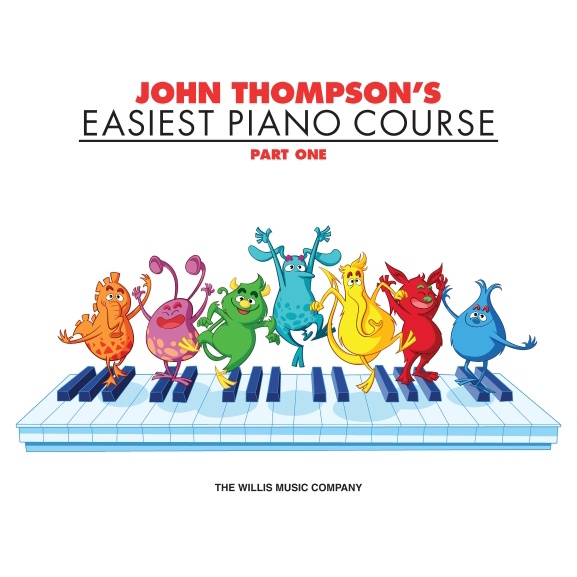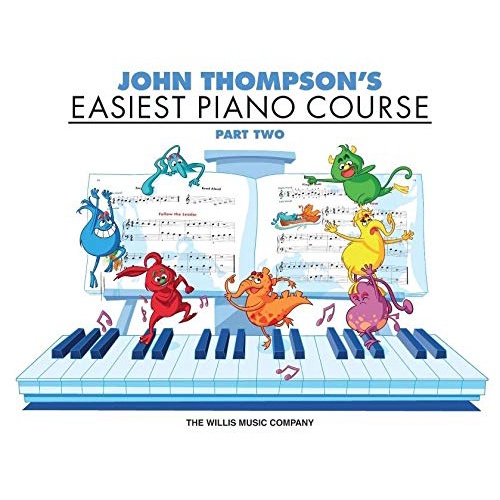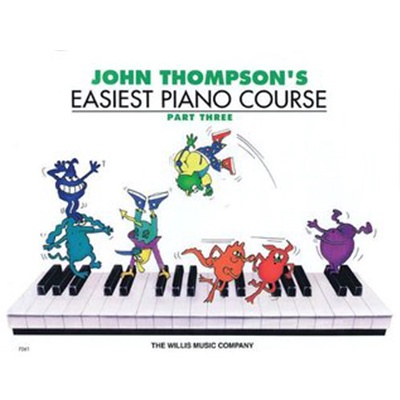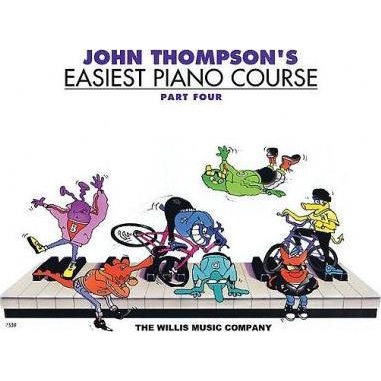When I learned piano decades ago, my music teacher started with John Thompson’s Method books. Of the many John Thompson books, John Thompson’s Easiest Piano Course was book that my teacher used.
John Thompson’s Easiest Piano Course is a series of 4 books, tailored specifically for beginners. With its time-tested reputation and unwavering reliability, this course has served as a trusted companion for countless aspiring pianists in their early years of piano training. This book is self- explanatory. Adults can self- learn piano with these books. Parents who are not familiar with piano or music can also use these books to teach their children piano and music.
In this blog post, we’ll look at what is learned in each of the seven books in John Thompson’s Easiest Piano Course Books.
Part 1 of John Thompson’s Easiest Piano Course

This is the first book of the series in John Thompson’s Easiest Piano Course. This book is ideal for anyone who is just getting started with piano and music, as it starts with the notes on the piano, and then introduce one note at a time.
Here’s what is covered in this book.
- The 7 notes on the piano. Students will learn all the 7 notes on the piano and how to identify them on the keyboard or piano
- Learn the clefs (treble and bass)
- Learn 5 notes each on the treble clef and bass clef.
- Note value of semibreve (whole note), half notes (minim), dotted minim, and crotchet
- Time signatures 2/4, 3/4 and 4/4
- Whole note (semibreve) rest, half note (minim) rest, quarter note (crotchet) rest
The book goes through each new concept in each lesson and put it into practice with a short sheet music for students to practice playing.
Part 2 of John Thompson’s Easiest Piano Course
Part 2 of John Thompson’s Easiest Piano Course builds on the foundation learned in the first book.

Here’s what are covered in this book:
- 3 more notes on the bass clef, and 5 more notes on the treble clef
- quavers, and how to beam them together.
- flats and sharps
- G Major and F Major
Like typical John Thompson style, each lesson introduces a new concept, and students can put it into practice with a short sheet music.
Part 3 of John Thompson’s Easiest Piano Course

In part 3 of John Thompson’s Easiest Piano Course, the notes and note value used in all pieces are still the same as those in part 1 and 2, however, sheet music is now written with articulation and dynamics. Students start to play music with dynamics (loud, soft, getting louder, getting softer, etc), accents, slurs, staccato, and so on in music piece.
More scales and chords are also introduced in this book. They are:
Part 4 of John Thompson’s Easiest Piano Course

In part 4 of John Thompson’s Easiest Piano Course, we extend notes to include those with ledger lines on the treble clef and bass clef. The repertoire in these books also involve more legato and staccato, and more different keys.
What’s after John Thompson’s Easiest Piano Course
Once students have completed the 4 parts of John Thompson’s Easiest Piano Course, they have actually covered a lot of ground, and are ready to start preparing for the Grade 1 Piano exam, as well as the Grade 1 ABRSM Music Theory.
